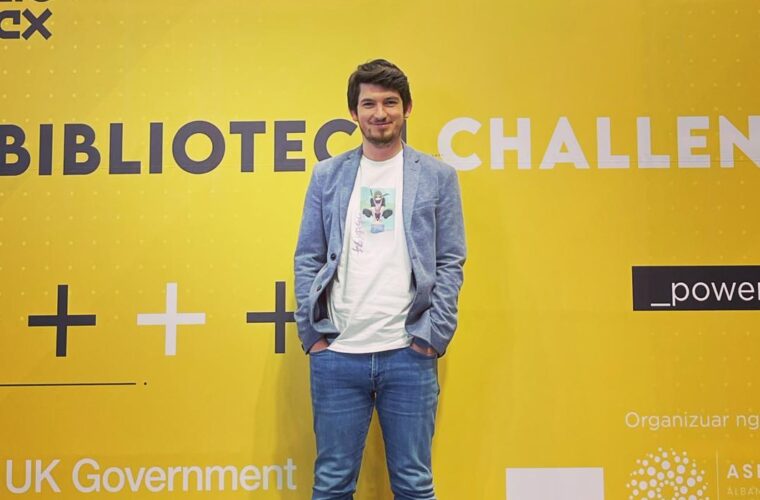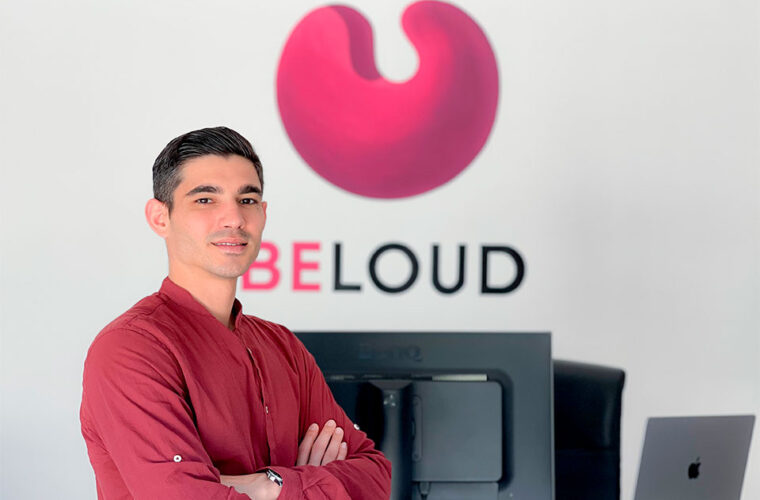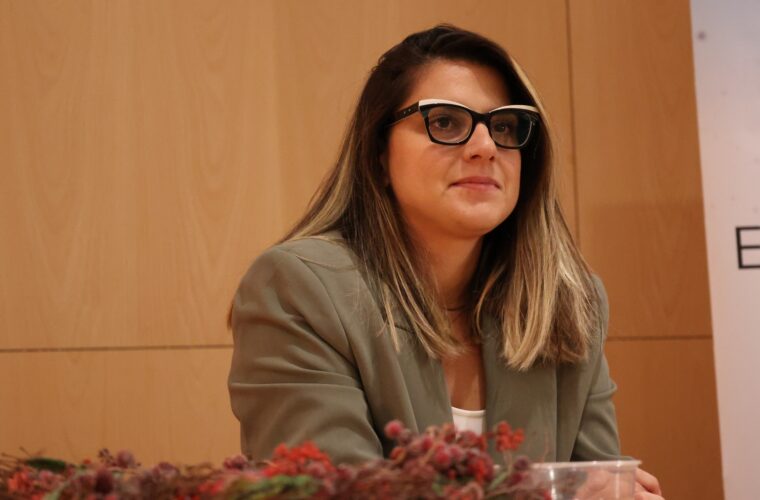Meet the talent: Jia Jang, Winner at Apple Swift Student Challenge 2024
Place of residence: Seoul
Position: Winner at Apple Swift Student Challenge 2024
Can you give us a brief introduction about yourself?
Hi, I’m Jia Jang, a frontend developer currently staying in Pohang, South Korea, studying at Apple Developer Academy. Once you enter the academy, you get to choose one of the three paths for specialised programmes: tech, domain, and design. I chose the tech path (when I joined last year) and have participated in many projects across different fields since then.
We learned that your undergraduate majors are not related to computer programming. Have you always wanted to become a frontend developer?
I was involved in a variety of business-related activities during my undergraduate programme. I was a project leader in some cases, worked as a marketer at a company during semesters, opened my own business, and carried out several freelance design commissions. It was partly from having many interests but I also wanted to know what I would like to do in life by exploring many fields.
After leaving my job, I participated in a hackathon as a freelance designer, where I met many developers. They told me that I would be a great fit for a developer job, and I understand their perspectives and directions very well. So, I tried out studying computer programming and ended up being completely absorbed in it. I was writing programming code after code, forgetting to eat or sleep.
How does your day at Apple Developer Academy look like?
Well, you can choose between morning and afternoon timetables at the academy. I take afternoon classes from 2 to 6 p.m. Before sessions, I usually study what I’ve been interested in or eat some food. After the classes, I join study groups or meetings for ongoing projects within the academy and sometimes do some workouts.
We would like to hear more about your recent 2024 Swift Student Challenge win. What is Swift Student Challenge?
Swift Student Challenge is an annual competition that takes submissions of original Swift-based apps made by students. For this year, participants were asked to develop a simple, compact iPad app whose features can be demonstrated within three minutes. Apple decided on 350 winners among submissions and selected 50 distinguished winners to be invited to Apple Park, providing a range of activities and programmes.
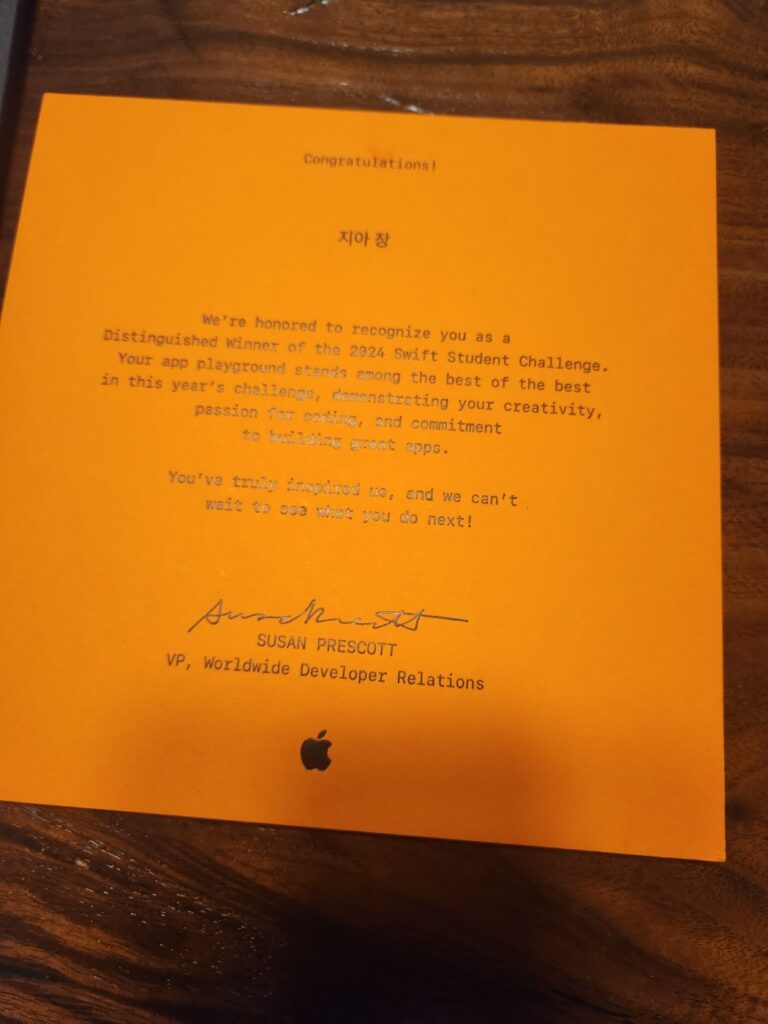
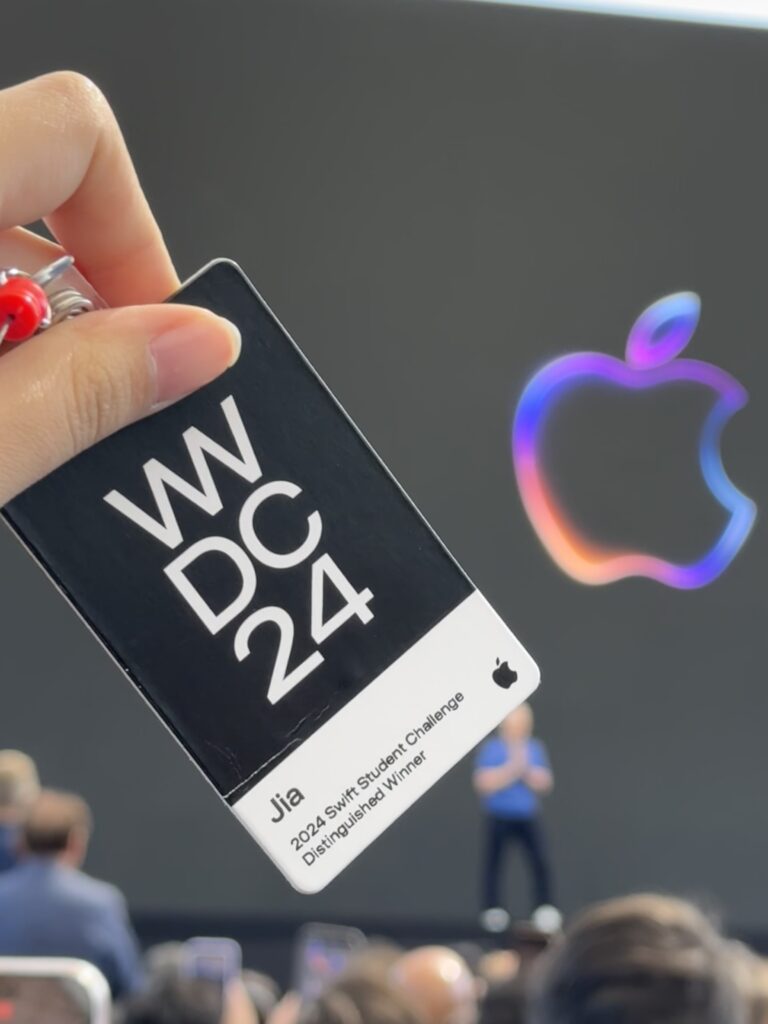
Tell us more about the app you submitted for the 2024 Swift Student Challenge.
“Time to Dot” was an app that I made while learning how to code in Swift. It was based on the thought that I would like to make an app that resolves the pain points of people around me.
My family and I have bad eyesight. Personally, I have astigmatism, which causes blurry vision at night or when I’m feeling tired. One of the most troubling experiences of living with astigmatism or low vision is checking the time when you wake up in the morning. You want to check what time it is, but you cannot clearly see the digits written on mobile displays due to blurry eyesight. Of course, you can use VoiceOver, an accessibility feature provided on Apple devices, but not when living with others, like in a dorm.
On “Time to Dot,” you can see hours and minutes in yellow, in braille. I chose the colour yellow because it is one of the most easily identifiable colours for people with low vision. I got inspiration from yellow brick blocks and signs designed for visually impaired people.
When you open the app, the first screen you see is the hour, and if you swipe to the right, you can see the minutes. A guide on how to use this tool is also provided in text and voice-over. You can also set an alarm on this app. You simply have to press and hold a button at the top and set the time by tapping the display. To turn an alarm off, you touch anywhere on the notification screen.
We heard that you completed the development of this app in three days, even though you started studying Swift only less than a year ago.
That’s right. I was already into web frontend development and wanted to learn how to make mobile software through Swift after entering Apple Developer Academy. Swift seemed a bit more difficult to learn than JavaScript, but I got the hang of it, as I was not completely new to computer programming.
Participating in hackathons has been a great way for me to learn. I get to spend one or a few days completely focused on developing one app. Being used to such a routine, I also managed to finish developing “Time to Dot” within three days.
What were some of the most memorable things that you heard from people around you when you were recognised as one of the distinguished winners?
Two comments really motivated me. One was from my father, saying the visit to Apple Park would be a great opportunity to confirm my potential (as a developer) and remind myself that I can achieve anything as long as I don’t give up. The other comment was from my friend, who told me that I am a very warm-hearted developer (who wants to make positive changes in the world). This made me realise what kind of developer I would like to be and want to live up to the title “warm-hearted developer”.
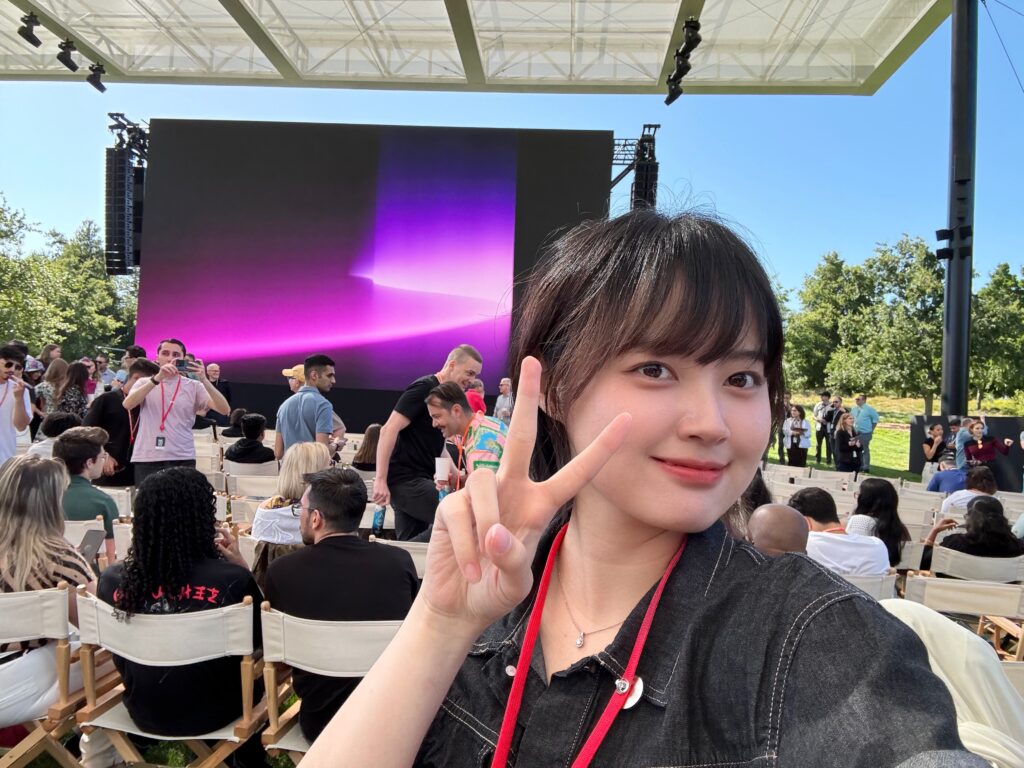
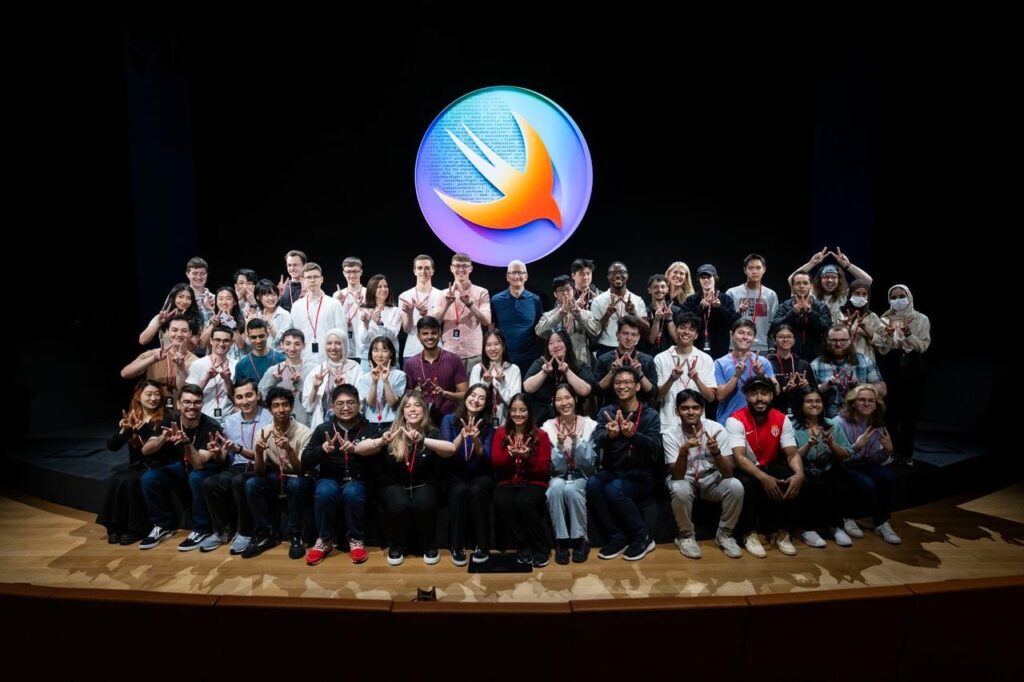
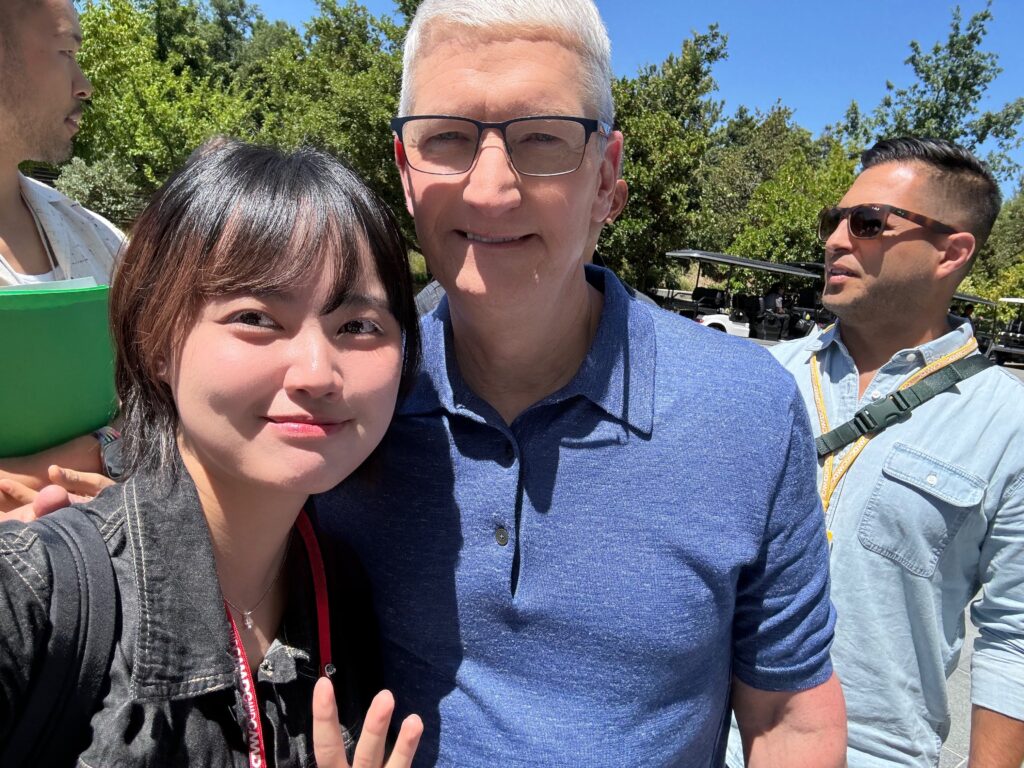
How was your experience at Apple Park?
Over the three-day programme, there were many interactions between Apple developers and distinguished winners, as well as assignments covering quite a wide range of expertise, including software, hardware, and even real-time coding.
There were also many booths of experts, dubbed “labs,” where you could” book appointments and ask questions or receive feedback. I visited a lab for accessibility design, and the staff introduced me to a designer with visual impairment who built the braille display feature on the Apple Watch system in consideration of my project “Time to Dot.” This made me realise that the company has put a lot of effort into making visitors’ time worthwhile at the park.
What’s your goal this year?
One is getting a job as a mobile software developer. People around me ask if I am still interested in other fields, but my search is over now. The second goal is launching “Time to Dot” in the market, receiving user feedback and improving the app. The third goal is to take my English skills to the next level. I would like to deliver my thoughts better in English and expand my career prospects overseas by advancing my language skills.
Do you have a message for future developers?
I didn’t major in computer programming. However, I started studying it on my own, and when I participated in events like hackathons and sometimes felt intimidated by other developers who already had much experience and knowledge in the field. I doubted myself if this was the right path, but once I pushed myself to continue studying it, I learned the joy of doing it.
So, I would like to recommend you embark on a project of your own, no matter how small it might be, like a small memo pad. I’m sure you’ll also find the fun of computer programming in the process.

